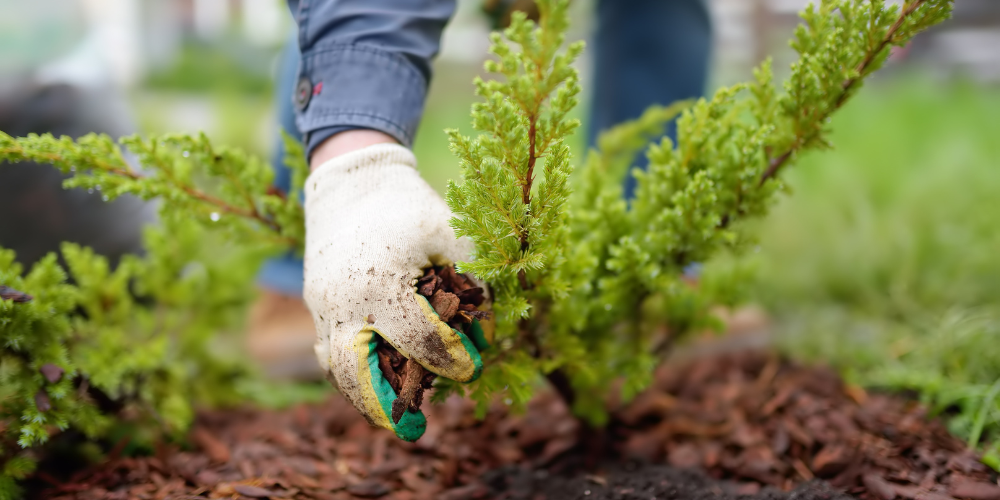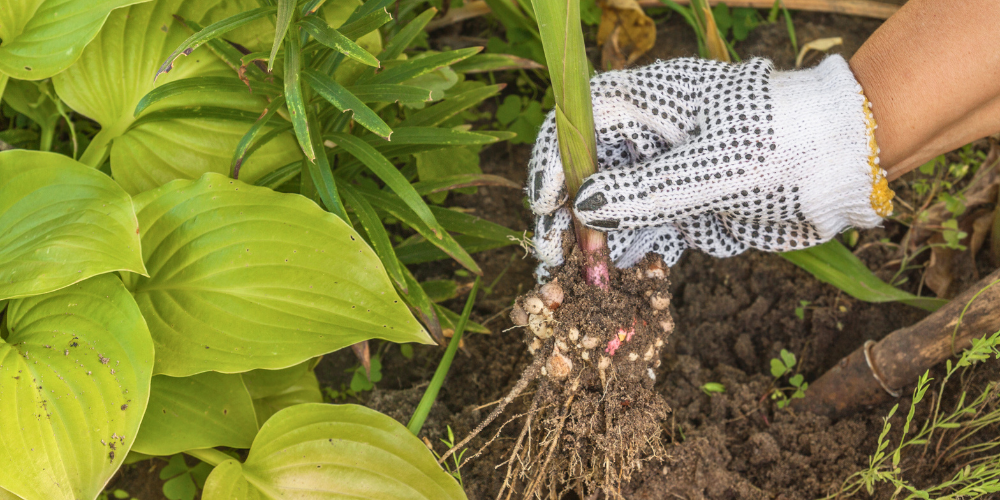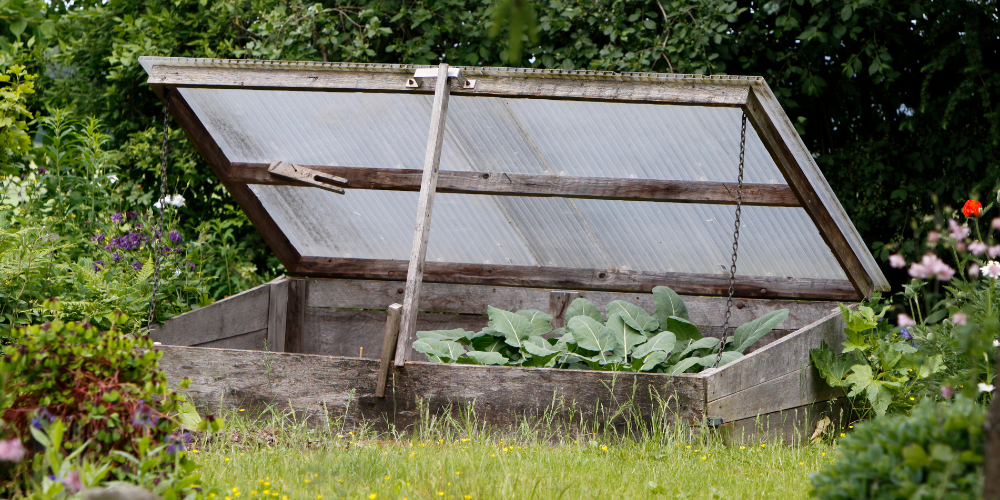Winter is a charming season full of its own unique beauty, but the cold and frost it brings with it can be a challenge for many plants—both young and old alike. The good news is that there are some tried and tested methods for keeping your garden safe and cozy when the cold hits. Here are some of our favorite ways to winterize your Utah landscape this year!
1. Embrace Mulching for Winter Protection
Believe it or not, one of the best ways to protect your plants from frost damage is through mulching! Mulch acts as a natural insulator and helps regulate soil temperature and retain moisture, which is vital when dealing with Utah's cold, dry climate.

How to Mulch Your Garden for Winter
Mulching your garden is a pretty simple, straightforward task, but here are a few pointers to help you do it right this season:
-Give Your Plants a Heavy Drink: Water your plants thoroughly before applying your mulch. Moist soil holds heat better than dry soil, making this step crucial for protecting your garden this winter.
-Apply a Generous Layer of Mulch: Spread a thick layer of mulch—about 2-4 inches—around the base of your plants. For the best results, use an organic mulch such as straw, wood chips, or leaves.
-Keep Mulch Away from Plant Stems: Be sure to leave a small space between the mulch and the stems of your plants to prevent rot and allow for proper air circulation.
2. Safeguard Vulnerable Plants by Bringing Them Indoors
Some plants are pretty good at surviving the Utah winter, but others are more sensitive to colder temperatures. If you have any tender perennials or tropical plants in your garden, now's the time to move them indoors for the winter. Follow these steps before bringing them inside to ensure a smooth transition and prevent unwanted pests from hitching a ride into your home:
-Shower Your Plants: Several times before moving your plants indoors, gently spray them with water from a hose or shower attachment to help dislodge any lingering pests like aphids or spider mites.
-Inspect for Pests: Carefully examine your plants for signs of pests or disease. Isolate any affected plants and treat them accordingly before bringing them indoors.
-Choose the Right Indoor Location:
Place your indoor-bound plants in a location with adequate sunlight and temperature control, like a sunny windowsill or a greenhouse.
3. Overwintering Summer Bulbs for a Blooming Spring
Bulbs bring delightful bursts of color to your garden in the spring and summer, but they need special care to survive the winter months. Fortunately, many summer bulbs can be overwintered, allowing you to enjoy their beauty year after year. Here are a few of our favorites, along with tips to help you overwinter them properly:

- Canna Lilies: To overwinter canna lilies, dig up the bulbs before the first frost and store them in a cool, dry place like a basement or garage, keeping them in a container with peat moss or sawdust to prevent drying out.
- Begonias: Lift begonia bulbs in the fall after the foliage dies back. Clean the bulbs and let them air dry for a few days, then store them in a cool, dark place, checking on them periodically to ensure they're not drying out.
- Dahlias: Dahlias should also be dug up before the first frost. Trim the stems, shake off excess soil, and let them air dry for a day or two before storing them in a cool, dry place in vermiculite or peat moss to prevent drying.
- Gladiolus: Gladiolus corms should also be dug up in the fall. Allow them to dry out, and, after about two weeks, trim the foliage and store them in a mesh bag or a box filled with peat moss.
- Timing Matters: Know Your Frost Dates
The timing of the first frost in Utah can vary depending on your specific location, meaning it's essential to know the average first frost date in your region to prepare your garden effectively. This information will help you plan when to start your winter garden preparations. For Salt Lake City, the average first frost dates are typically as follows:
- Early October: Northern areas, including Salt Lake City proper.
- Late September: Elevated areas and valleys to the east.
Keep in mind that these dates are approximate; it's still a good idea to stay informed through local weather forecasts and gardening resources for more precise timing.
- Prune and Tidy Up Your Garden
Before the frost arrives, take some time to prune and tidy up your garden by removing dead or diseased plant material to prevent the spread of disease. It's also a good idea to trim back any overgrown branches that could be damaged by heavy snow or ice.

Additional Tips for Winter Garden Care
The techniques and methods we've discussed so far will give you a good starting point for your winter garden preparations, but here are a few other tips to keep in mind as the temperatures continue to drop:
-Protect Your Evergreen Shrubs: If you have evergreen shrubs in your garden, we suggest wrapping them in burlap to shield them from harsh winter winds and heavy snowfall.
-Consider Cold Frames: Cold frames are a perfect way to lengthen the growing season and protect your more delicate plants from frost; plus, you can also use them to grow cold-hardy vegetables throughout the winter!
-Monitor Soil Moisture: Even in winter, it's essential to monitor your soil's moisture levels. However, if the ground does dry out, water your plants sparingly, as winter winds can quickly dehydrate them.
Preparing your garden for the first frost in Utah requires careful planning and attention to detail, but these tips, tricks, and techniques should help you approach this task with confidence. Come by and see us today at Millcreek Gardens for more helpful advice and all the supplies you'll need to be frost-ready this year in Salt Lake City!


